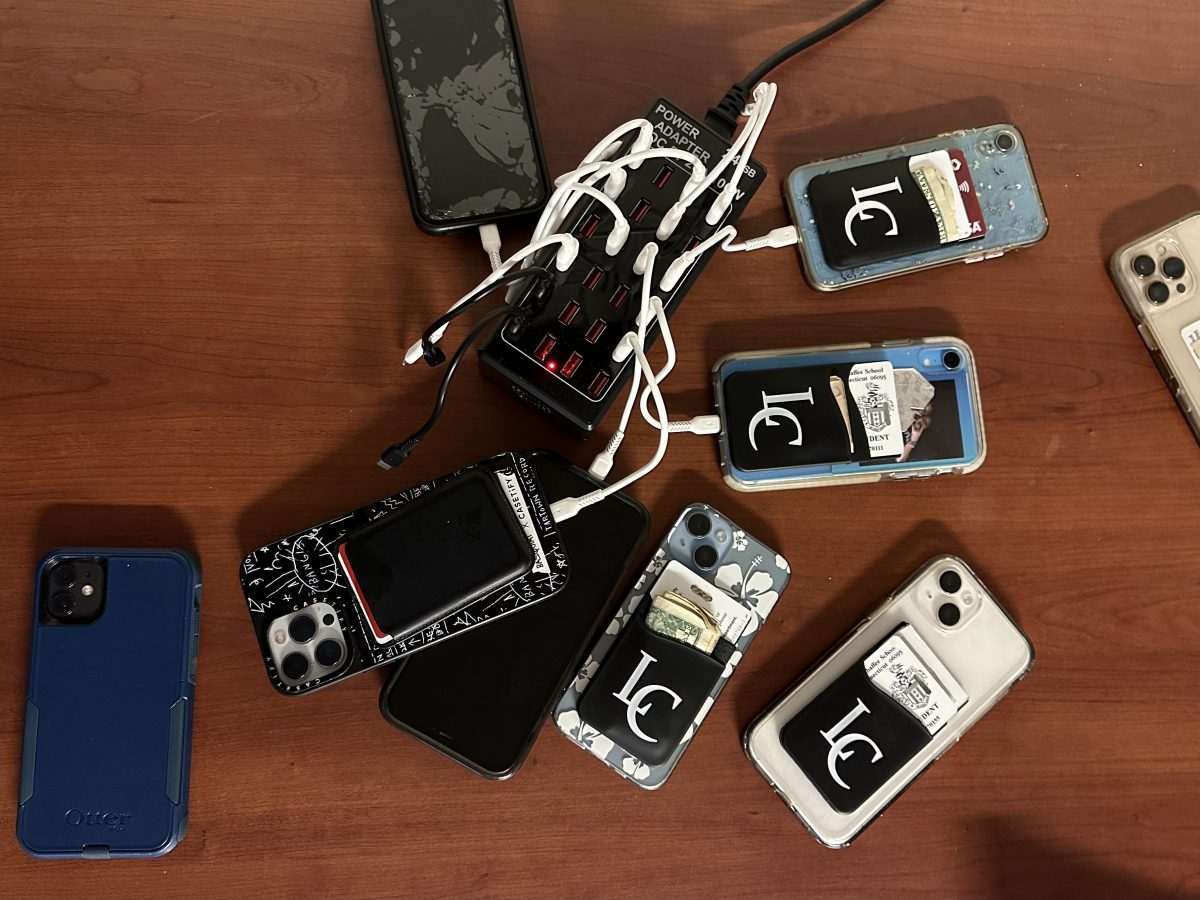Loomis Chaffee classrooms used to be notorious for students finding different ways to hide their phones from their teachers during class. Now, the school has attempted to curb the habit at its source, asking students to all put their phones in designated phone areas with charging stations. But will this actually change classroom dynamics in the intended manner? I do not believe so.
The new phone policy was announced at the opening convocation by our Head Of School, Dr. Culbert, and came as a surprise to many students. The Loomis Chaffee School Handbook states that “Classes and after-school activities will be tech-free zones,” and explains how the new policy asks faculty members to collect phones at the beginning of class and ensure the devices will not be used until the end of class, unless there are extenuating circumstances.
Over the past four years, the Loomis Chaffee community has switched to a digitally accessible model. All assignments are posted on Canvas and teachers communicate with students by email regularly. Each year, the Deans remind students that regularly checking their email, which is often done through cell phones, is imperative to their success at Loomis. However now, students are being simultaneously told that their constant use of technology is extremely harmful and ought to be stopped.
This contradictory messaging is very confusing. Not to mention, it does not entirely remove the problems that surround technology in class. The same online model that Loomis relies on requires students to use their laptops often in class – these laptops often have texting and social media access that students will still use during classes instead of their phones.
Many students have been critical of the minimal impact of the phone policy in classrooms. “It’s not going to make a difference,” said Sahasra Reddy ’27, expressing a similar sentiment shared by students across class years.
On the other hand, students have also acknowledged some marginal benefits of the new policies, including the implementation of campus-wide charging stations. These stations can be found in almost every classroom on campus and are appreciated for their ability to provide a quick charge to phones, saving students from the hassle of finding a phone charger.
All in all, while most students are taking the new changes to the phone policy in stride and are willing to part with their phones during classes, many others are rightfully taking issue with follow-up requests surrounding phone use outside of classrooms. In her address to the school at the Opening Convocation, Dr. Culbert extended the phone policy to include active device limitations during lunch and passing periods.
Heavy-handed restrictions on phones clash with digital learning efforts that Loomis has adapted. Students often use their phones to check Canvas to make sure they are prepared for their upcoming class or to communicate with their friends about work. During times like lunch, students acknowledge that they only use their phones when they are sitting alone. “I won’t go on my phone when people are around,” said Angelina Wang ’26.
Loomis most definitely has good intentions with their new phone policy, but it must be acknowledged that limiting technology use on campus and in classrooms is complicated by Loomis’s reliance on digital sites and communication such as Canvas and Outlook. There needs to be an understanding between faculty and students and cooperation on future iterations of the phone policy, and a compromise needs to be reached for the benefit of every party involved.






